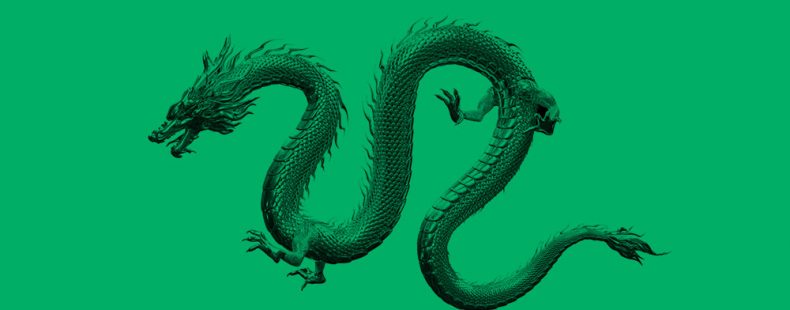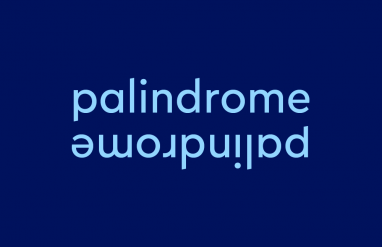People around the world have been fascinated by dragons for millennia. From the snake-like dragons of the East to the dinosaur-like dragons of the West, we just can’t get enough of these gargantuan reptiles! They feature prominently in myths and legends (like St. George slaying a fearsome dragon or the Norse hero Sigurd battling the terrifying dragon Fafnir), and even after all of these years, dragons still captivate us whenever they appear in popular culture.
To pay tribute to their draconic magnificence, we scoured books, television, film, video games, and even a cartoon or two to discover a treasure trove of famous dragons.
Syrax and Caraxes, House of the Dragon
Undoubtedly, fans of the 2022 TV show House of the Dragon (and the 2018 book that inspired it, Fire and Blood) will meet many dragons over the course of the show, but two of the major draconic all-stars are Queen Rhaenyra’s dragon Syrax and Prince Daemon’s dragon Caraxes. Syrax’s name is said to derive from the name of a goddess of the Valyrian religion, which House Targaryen historically worships.
Caraxes (whose name origin has not been specified) is nicknamed the “Blood Wyrm” for his fierceness. The word wyrm is actually an Old English word that was used to refer to serpents and dragons. In modern fantasy, wyrm is often used as a synonym for dragon or to refer to a dragon-like serpentine creature that lacks wings or legs.
Smaug, The Hobbit
The Hobbit‘s Smaug embodies many of the traits fantasy fans may associate with Western dragons (known mainly from European myths), chief among them being his extreme arrogance and treasure hoarding. According to author J.R.R. Tolkein, Smaug’s name comes from the Germanic word smeugan meaning “to squeeze through a hole.” It’s possible that this word refers specifically to a worm, and this term was often used in old British literature (which Tolkien would have been very familiar with) to refer to dragons.
The incredibly arrogant Smaug would be proud to know that a genus of African lizards was recently named after him. Like Smaug himself, the Smaug genus of lizards have tough scales and a vulnerable soft belly.
Shenron/Shenlong, Dragon Ball
Cartoon fans of the ’90s will recognize this iconic dragon. Shenron, whose name means “Dragon God” in Japanese, resembles a typical Chinese dragon; he is a very long, snakelike reptile who is omniscient and has god-like powers. In the Dragon Ball series, the characters collect the titular dragon balls in order to get a wish from the mighty Shenron.
Mushu, Mulan
Speaking of Chinese dragons, our next powerful reptile is more … fun-sized than most of our other dragons. Although this dragon’s name may have been inspired by the Chinese dish moo shu pork, the characters of his name (Mù and xū) translate to “wood” and “necessary.” Voiced by Eddie Murphy, Mushu appeared in the beloved Disney film Mulan as a wise-cracking, bumbling sidekick. This depiction differs from typical Chinese dragons, who are often portrayed as being elegant, imposing, and wise.
Norbert(a), Harry Potter
The Harry Potter universe features many different breeds of dragon, such as the Chinese Fireball and the Ukrainian Ironbelly. In the stories, the beast-loving groundskeeper Hagrid hatches a Norwegian Ridgeback dragon he names Norbert. Norbert becomes too wild for Hagrid to handle and is sent off to be raised by professionals, who discover that “Norbert” is actually a female dragon and is renamed “Norberta.”
While it may sound silly at first, the name Norbert is actually a great pick. Norbert comes from a combination of the Germanic words for “north” and “bright.” And Norbert, of course, is a fire-breathing dragon (“bright”) from Norway (“north”).
Bahamut and Tiamat, Dungeons and Dragons
In the pantheon of the Dungeons and Dragons roleplaying game, we have the good dragon Bahamut and the evil dragon Tiamat. Bahamut, the dragon god of justice, takes his name from Bahamut, a creature from pre-Islamic Arab mythology who is described as a gigantic fish that holds up the world. Tiamat, a cruel five-headed dragon goddess of greed and chaos, takes her name directly from a Mesopotamian sea goddess of chaos who resembles a giant dragon.
King Ghidorah, Godzilla
Speaking of multi-headed dragons, let’s meet the fearsome King Ghidorah from the Godzilla series. The King is one of Godizilla’s regular rivals and is often depicted as the most powerful. Ghidorah’s name comes from the Japanese word for hydra, which is ヒドラ (hidora). This is no coincidence, as King Ghidorah was directly inspired by the multi-headed Hydra of Greek mythology and Yamata no Orochi, an eight-headed, hydra-like dragon from Japanese mythology.
Nicol Bolas, Magic: The Gathering
In the story of the trading card game Magic: The Gathering, Nicol Bolas is an extremely powerful, malicious dragon who can travel between worlds. Like most dragons in pop culture, Nicol Bolas sees humans as inferior beings to be manipulated for his own malevolent ambitions. Nicol Bolas’s scheming nature is often reinforced by the cards that depict him. Many cards featuring this dragon allow the player to take control of an opponent’s cards, presumably a move to be accompanied by a nefarious cackle.
Falkor, The Neverending Story
Enough with the mean dragons! The dragon Falkor from The Neverending Story is a beloved part of 1980s nostalgia for many movie fans. Falkor also sports a pretty unique design, having the long and sleek body of an Eastern dragon combined with a dog-like head and fur. In the original German book, Falkor was called Fuchur. It is commonly said that this name was inspired by the Japanese word fukuryū, which can translate as “luck dragon.” Sure enough, Falkor is referred to as a “Luck Dragon” in The Neverending Story.
Spyro, Spyro the Dragon
Moving on from ’80s nostalgia—and on to ’90s nostalgia! Spyro appeared in the Spyro the Dragon series of videogames, which featured the young purple dragon fighting bad guys and collecting shiny objects. During development of the game, Spyro was originally called Pete in reference to the Disney film Pete’s Dragon. Ultimately, the dragon was renamed Spyro, a cute name based on the word pyro from the Greek pyro- (“fire”).
More dragons from A Song of Ice and Fire
The world of House of the Dragon and Game of Thrones has plenty more dragons flying around Westeros:
- Drogon, Rhaegal, and Viserion (“children” of Daenerys Targaryen)
- Balerion the Black Dread (Aegon the Conqueror)
- Vhagar (Queen Visenya, Aemond One-Eye)
- Meraxes (Queen Rhaenys)
- Sunfyre (Aegon the Elder)
- Dreamfyre (Queen Helaena)
- Tessarion the Blue Queen (Daeron the Daring)
- Silverwing (Ulf the White)
- Vermithor (Hugh Hammer)
- Morghul (Princess Jaehaera)
- Shrykos (Prince Jaehaerys)
- Syrax (Princess Rhaenyra)
- Caraxes the Blood Wyrm (Daemon the Rogue Prince)
- Meleys the Red Queen (Rhaenys the Queen Who Never Was)
- Seasmoke (Laenor, Addam Velaryon)
- Moondancer (Baela)
- Morning (Rhaena)
- Stormcloud (Aegon the Younger)
- Vermax (Prince Jacaerys)
- Arrax (Prince Lucerys)
- Tyraxes (Prince Joffrey)
- Sheepstealer (Nettles)
- Grey Ghost
- The Cannibal
More dragons from popular culture
It’s no secret that we love dragons as you can find them almost anywhere!
- Discord, My Little Pony: Friendship is Magic
- Toothless, How to Train Your Dragon
- The Blue Eyes White Dragon, Yu-Gi-Oh!
- Villentretenmerth, The Witcher
- Seath the Scaleless, Dark Souls
- Lofwyr, Shadowrun
- Dragonite, Garchomp, Rayquaza, Pokémon
- Trogdor the Burninator, Homestar Runner
- Saphira, Eragon
- Alduin and Paarthurnax, The Elder Scrolls: Skyrim
- H.R. Pufnstuf, H.R. Pufnstuf
- “Puff, the Magic Dragon,” song by Peter, Paul, and Mary
- Deathwing, Alexstrasza, Ysera, Malygos, and Nozdormu, Warcraft














